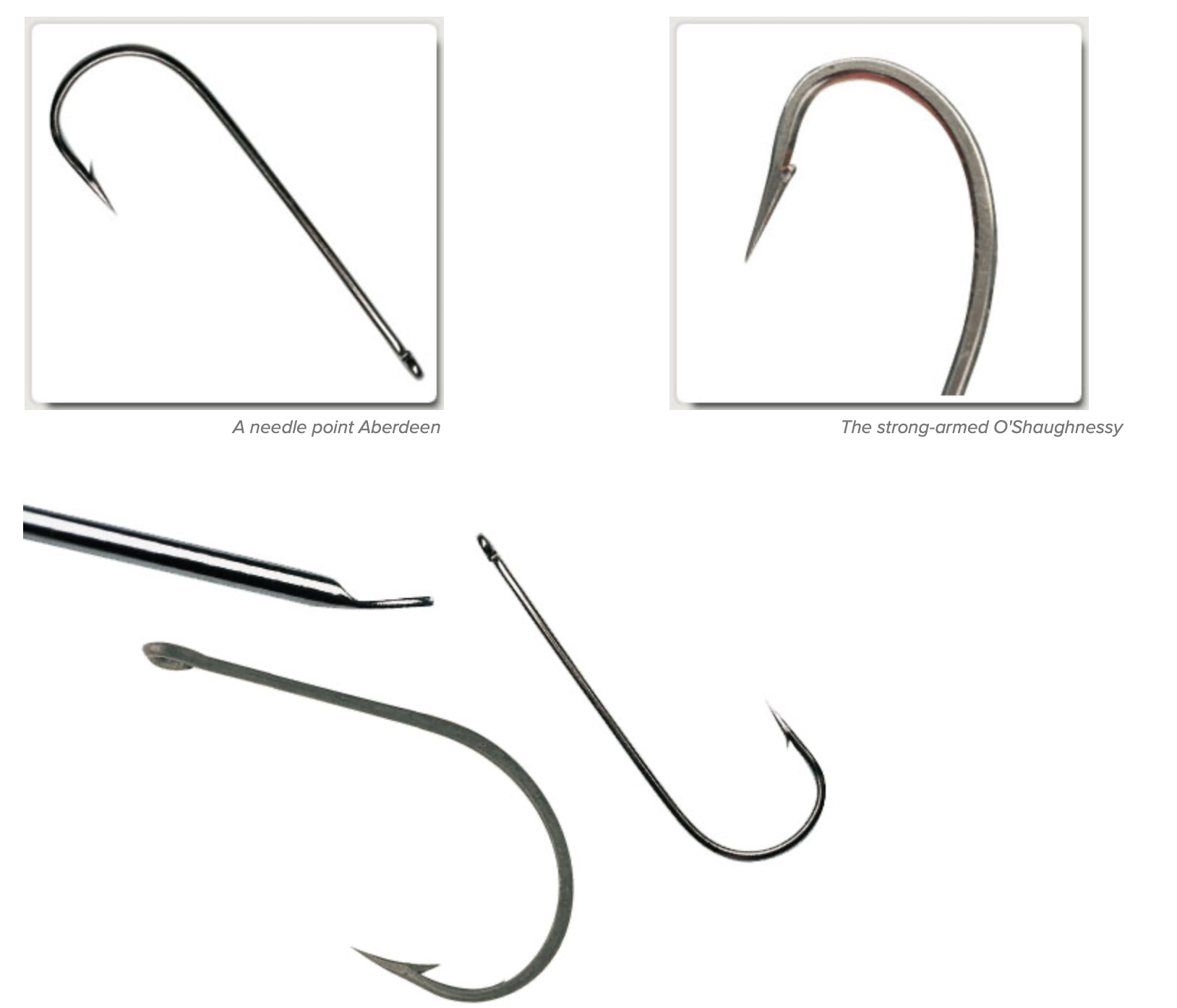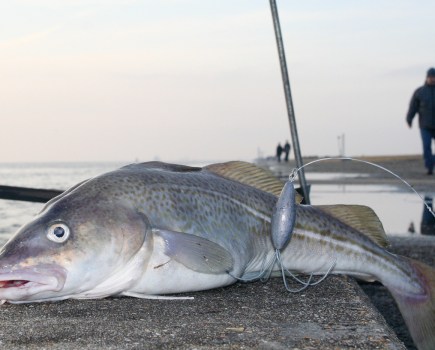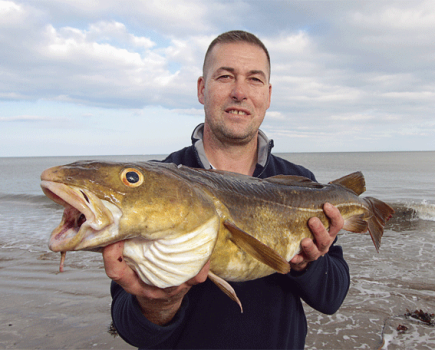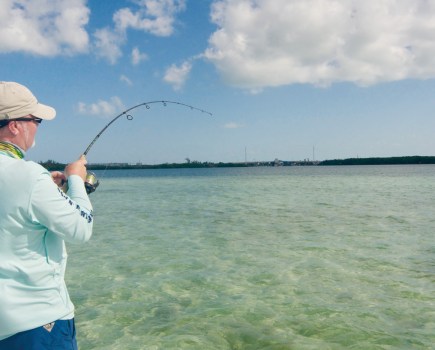The terms used to describe hooks, their patterns and the closer technical details often leave the would-be buyer confused. Here we spell out loud and clear what the terms mean so that you will always know, for example, what a reversed hook means…
Worm hooks and bait holding barbs:
Patterns with bait barbs are often described as worm hooks, although the barbs can prevent worm baits sliding round the bend of the hook where they are most effective.
The trade tells us that the worm hook or bait-holder hook is a volume seller, although we suspect that most of the hooks are sold to holiday anglers who perhaps don’t know the pitfalls of such a design.
In our view a smooth-shanked Aberdeen is a far more efficient worm hook.
Long/short/medium shank:
This is the length between the eye and the bend of the hook. Long shanks are best for worms and sandeels and short shanks for a crab, piece of fish etc. Look out for the medium-shank lengths, which can prove effective for a live prawn, shellfish and fish or squid strips.
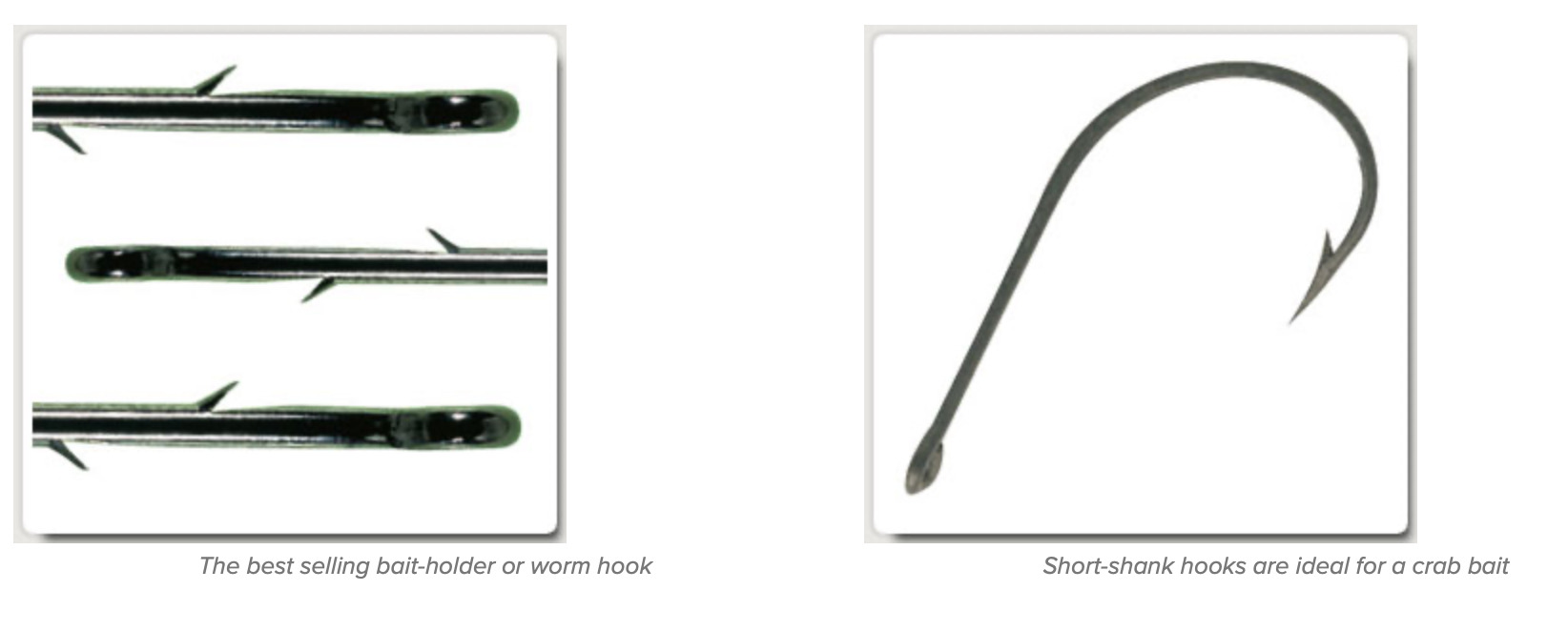
Barbed:
Most sea hooks are barbed, but the barbs vary in size. For fishing at long range a decent barb is recommended. Barbless hooks have very limited potential for sea angling.
Whisker barb:
Some popular match fishing hooks have the smaller whisker barbs, which are claimed to improve penetration.
Triple barb:
A relatively new concept in hook point design, the triple barb is said to offer a non-slip hold.
Reversed:
A hook with the point and bend offset from the shank. Most hooks are straight, but the offset point does offer an extra hooking dimension.
Eyed/needle eyed:
This relates to the size of the eye to which the line is attached.
Smaller eyes are more suited to baiting with the delicate worm baits, while larger eyes are actually better to help hold bulky baits, like squid or a crab, on the hook shank.
Spade end:
The hook has a flattened spade at its end, instead of the usual eye.
As a result, a special knot has to be used to hold it. This helps to hold the hook straight and some competition anglers, especially on the Continent, prefer this type of hook for delicate bait presentation for small fish.
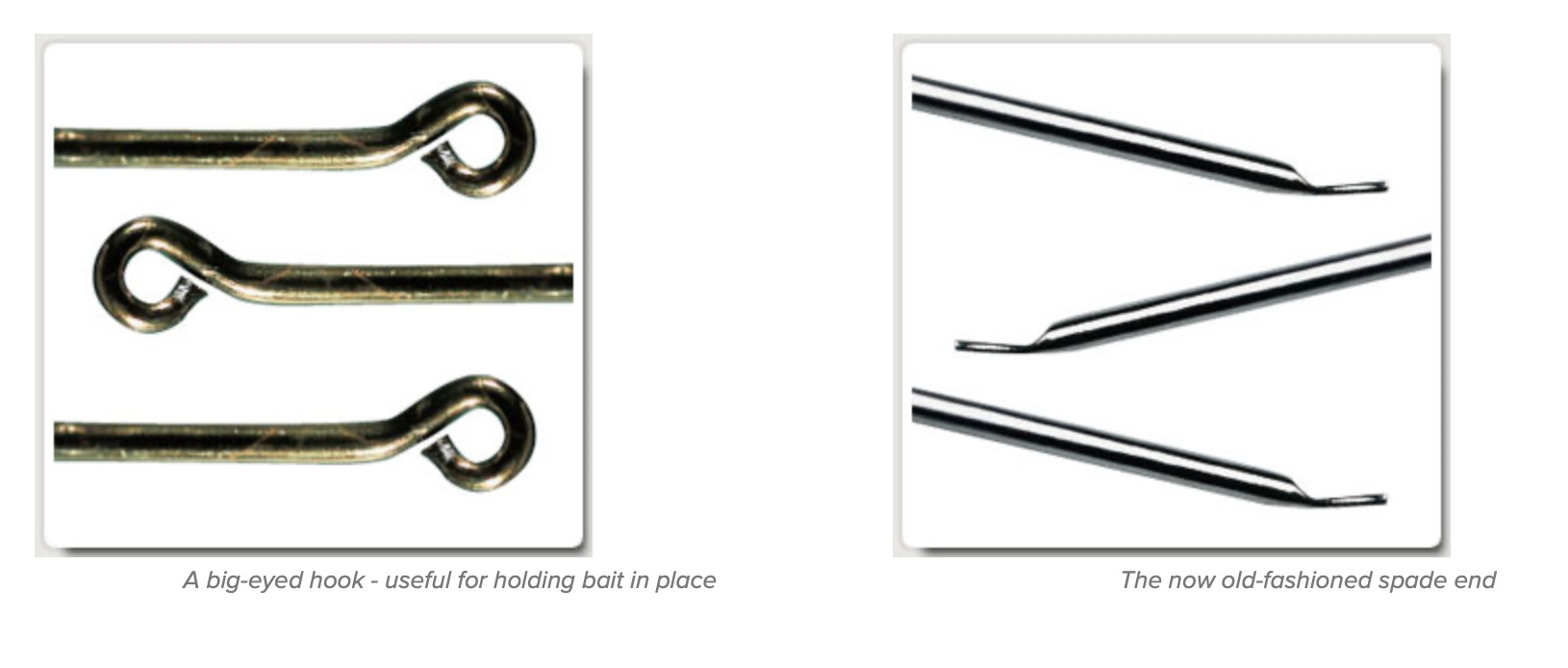
Ultra point/needle point:
Long, fine needle points are preferred by match anglers, although beware of the fine points being blunted, bent or even broken off when being retrieved over pebbles and rocks.
Fine wire/heavy wire:
This relates to thickness of the wire used to make the hook.
Fine-wire hooks are used for catch and release because they can be bent out of a fish’s mouth.
Stainless steel, nickel, gold, black enamel:
These are all coverings designed to protect the steel from rusting. Stainless hooks generally get the thumbs down because they don’t rust away if lost in a fish.
O’Shaughnessy:
An old hook pattern renowned for its high strength and a unique, slightly hooked, round bend.
